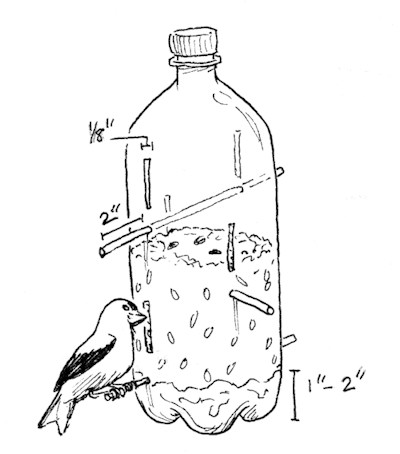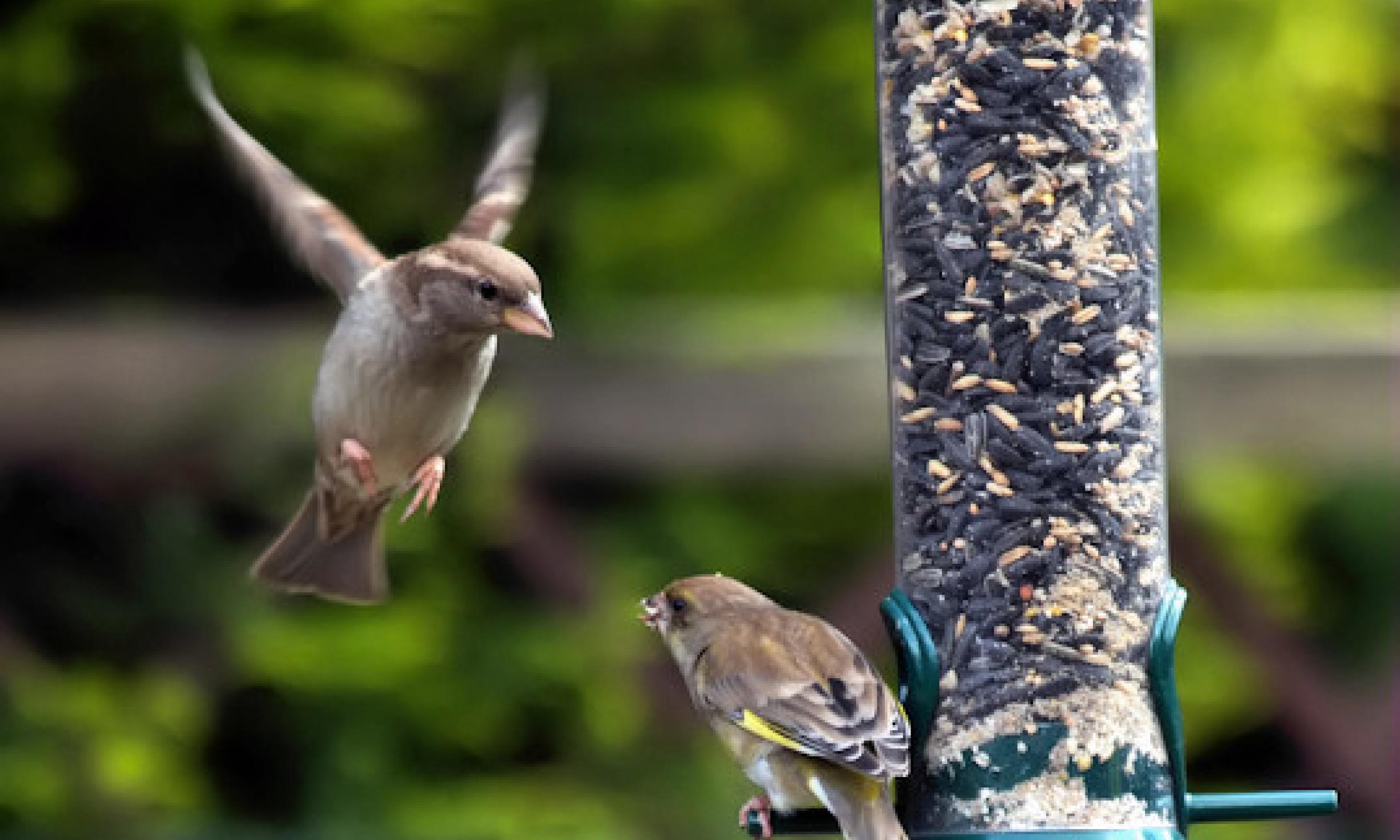Bird watching is an engaging and educational hobby that offers a unique blend of excitement and tranquility you won’t find anywhere else. Although a wide variety of birds will often be seen during a walk or hike, you can observe many of these birds from the comfort of your own home if you simply provide homemade bird feeders.
Using homemade bird feeders to set up a feeding station in your backyard will bring you years of enjoyment as you closely observe and come to intimately know the dozens of different birds residing nearby. Shortly after setting up a proper feeding station, the birds in your area will see your house as a valuable resource for food, shelter, and potential mates. Once established, your feeding station will be the site of frequent visits from perhaps hundreds of birds. As you spend more and more time watching the birds in your backyard, you’ll gain an intimate perspective into each specie’s unique behaviors and get a sense for the yearly distribution of these birds. This is an excellent way to encourage young people to spend more time observing and connecting with the natural world.
Although a lot of money can be spent on the equipment needed to set up a feeding station, you can simply use a variety of household items and an afternoon and build most of what you need yourself! First, start by making a variety of bird feeders, which are the most important component of any feeding station. Building a hanging feeder out of an empty soda 2-liter soda bottle is quite easy. First, stuff dry paper towels into a rinsed-out soda bottle until they form a 1-2″ layer on the bottom. Next, add a couple of perches for the birds by poking wooden kitchen skewers through the bottle. The first skewer should be poked through where the paper towels come up to; another 1 or 2 skewers should be poked through at right angles to each other with about 2-3″ in between one skewer and the next. Next, trim the skewers back so only about 2″ extend outside the bottle. Using a utility knife cut a narrow slit, about 1/8″ wide, about 1-2″ above each perch. Fill the bottle with birdseed and place the cap back on. Finally, wrap a wire around the neck of the bottle, twist it tight, and then use it to hang the feeder from a limb where you plan on establishing a feeding station.

This homemade tube feeder will attract a wide range of bird species, especially if you use a seed mix that includes sunflower seeds, safflower seeds, millet, and dried corn. There are other easy-to-build feeders that accommodate different food types; the more types of food you provide the richer diversity of bird species you will observe. For example, you can build a very simple tray feeder that, in addition to seeds, will accommodate larger food items such as leftovers and fruits. Simply mount a flat piece of wood (about 1-2 square feet, in any shape) horizontally (either on a post of fence railing), and you have a fantastic tray feeder. For the deluxe edition, simply hammer a couple of nails through the board so they point upwards. Also, attach a couple of metal jar lids so the open side faces upwards (this can be done with a nail or large staple). Now you can use the platform to leave out a variety of bird-friend leftovers, such as old fruits and vegetables, stale baked goods, meat scraps, and even old dishes, such as pasta. The upward-pointing nails are used to secure food scraps, such as an orange or bagel, and the lids can be filled with a sugary treat, such as jam or jelly. This combination of a hanging feeder and tray feeder will attract a wide variety of birds with different food preferences and feeding behaviors. Expect to see chickadees, jays, robins, wrens, thrashers, blackbirds, cardinals, and orioles…just to name a few! Other ideas for homemade bird feeders include a hanging nylon stocking filled with nyjer seed or a hanging plastic mesh bag (the kind that onions or oranges come in when purchased in bulk) filled with a suet brick.

In addition to feeders, there are many other items you can add to a feeding station that will help to attract a wider range of birds. For example, add a birdbath and provide your new feathered friends with an excellent place for drinking and cleaning. Many items found around the house can be used as a birdbath. Simply invert a baking dish or trash can lid, fill with water, and set on a small foundation of rocks or bricks and, voila, you have a birdbath! You can also periodically set out your garden house with sprinkler attachment near the feeding station; many birds, especially hummingbirds, will love the mist on a hot summer afternoon. Birdhouses, which are used by birds for nesting and roosting, can also add a lot to a feeding station, especially in early spring when birds are on the lookout for suitable nesting locations. You can simply drill a hole, about 1.5″ wide, in a dried gourd, and hang it from a tree. Many birds, such as wrens, chickadees, and Purple Martins, would adore such a home! Finally, another low-cost addition to a feeding station is planting a variety of shrubs, bushes, and flowers that help to attract birds by providing shelter and food in the form of fruits, seeds, and nectar.
Hopefully these tips will get you well on your way to building a fully equipped feeding station in your backyard. All of these projects are ideally suited to involve children and make for great afternoon family projects. Not only will children have the joy of building something themselves but they then use their creativity to attract and watch dozens of fascinating bird species. Although these homemade bird feeders cost nothing to make, you’ll find them priceless in their ability to better connect young people with their natural world.
